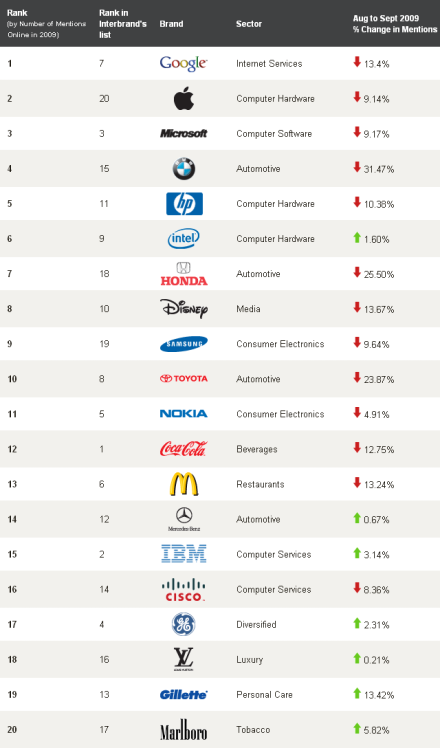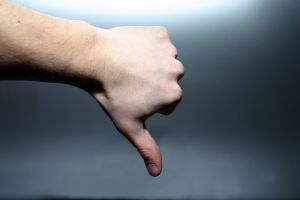Back in September, I published a post here on the Corporate Eye blog that discussed Interbrand’s annual list of the top global brands. The 2009 list didn’t have a lot of big surprises, and passed by the eyes of the world without much fanfare.
Now, Sysomos has conducted additional research on the top 20 global brands listed in Interbrand’s 2009 ranking. Sysomos analyzed those brands during the same period of time that Interbrand researched them for its best global brands list, and created a separate ranking based on how often those brands were mentioned online, particularly through social media.
Comparing the rankings of the brands included in the Sysomos study to the rankings from the Interbrand study is very interesting. The results are below:

Perhaps the most interesting piece of data revealed by the Sysomos study is the difference in ranking between the Sysomos list and the Interbrand list for Apple. This is a brand that has grown exponentially in recent years thanks to innovative products and a massive consumer buzz, particularly online. Notice in the chart above that Apple ranks 20th on Interbrand’s 2009 list of the top global brands but in terms of social media buzz as calculated by Sysomos, Apple is #2.
On the flip side, Coca-Cola ranks first in Interbrand’s study, but the brand is only ranked 12th on the Sysomos list, putting it in the lower half of the 20 brands analyzed. Similarly, IBM ranks second in Interbrand’s study, but it’s only ranked 15th in the Sysomos list.
One conclusion that could be speculated based on the data from this small study is that well-established, mature brands don’t seem to need the high levels of social media buzz to sustain their value, while new and growing brands can reap great benefits from the power of a social media buzz.
Of course, this is a very small study of just the top 20 brands based on global value, so conclusions can only be hypothetical. However, it makes sense that new and growing brands have more to gain from investing in social media advertising and branding campaigns than established or new brands do.
What do you think of these two studies when the data is placed side-by-side? Any interesting revelations?
Image: Sysomos
Lucy is Editor at Corporate Eye


